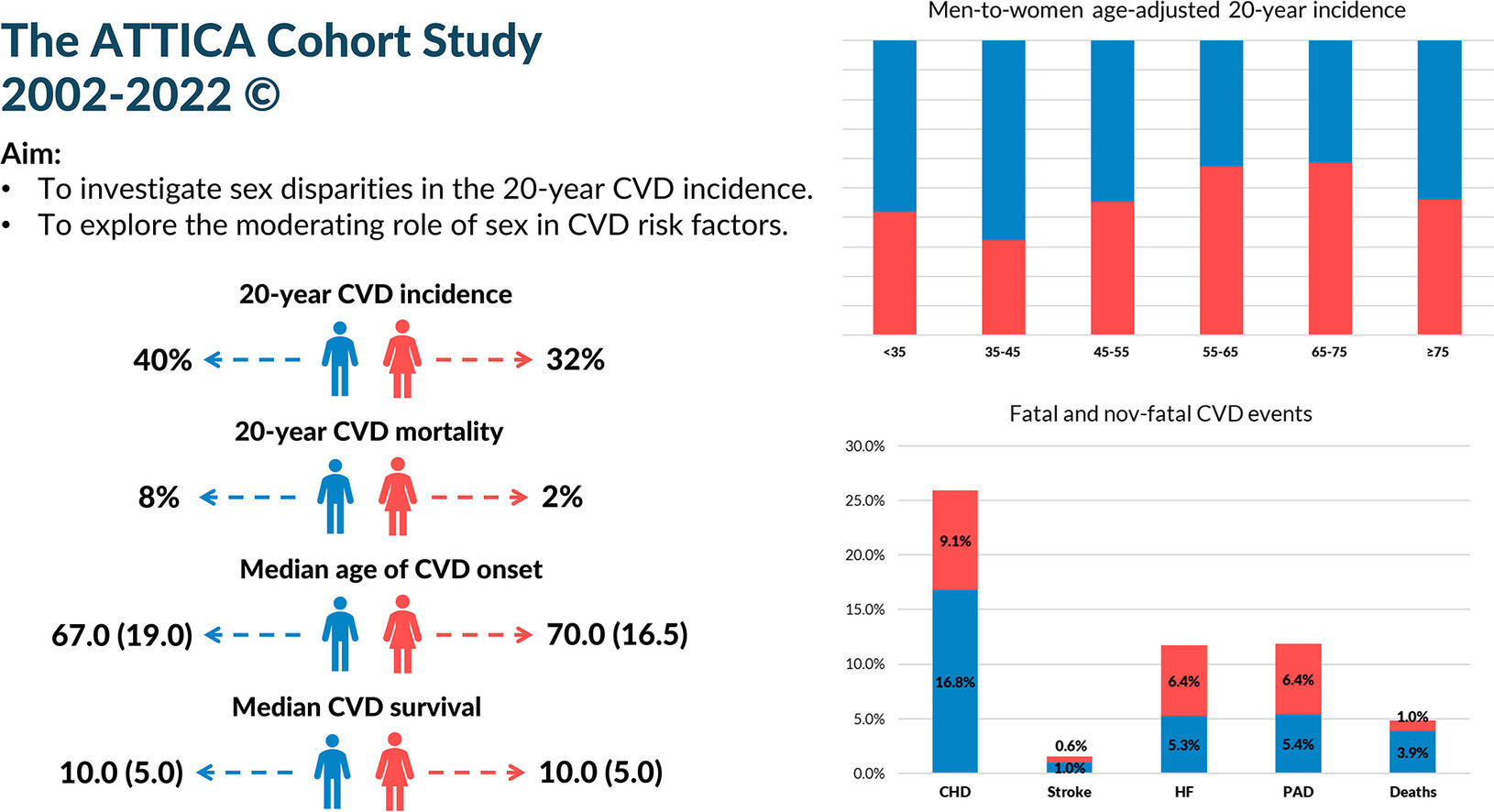Evangelia G. Sigala, Sophia Vaina, Christina Chrysohoou, Eirini Dri, Evangelia Damigou, Fotis Panagiotis Tatakis, Athanasios Sakalidis, Fotios Barkas, Evangelos Liberopoulos, Petros P. Sfikakis, Costas Tsioufis, Christos Pitsavos, Demosthenes Panagiotakos,
Sex-related differences in the 20-year incidence of CVD and its risk factors: The ATTICA study (2002–2022), American Journal of Preventive Cardiology, Volume 19, 2024, 100709, ISSN 2666-6677
Highlights
- Sex disparities in 20-year CVD incidence, manifestations, mortality, burden, and risk.
- After 55 years of age, women had a higher 20-year incidence, compared to men.
- Men had higher CVD mortality.
- Women experienced a greater burden of CVD risk factors beyond 35 years of age.
- Clinical risk factors and dietary habits were key determinants for sex discrepancies.
Abstract
Objective
The purpose of this study was to examine sex-related differences in the long-term (20-year) incidence of cardiovascular disease (CVD) and its determinants.
Methods
In 2002, 3,042 apparently healthy Greek adults were recruited, and in 2022, the 20-year follow-up was conducted with 2,169 participants, 1,988 of whom had completed CVD assessments. Sex-specific analyses using nested Cox proportional hazards were performed, as well as classification and regression tree (CRT) analysis modeling.
Results
Overall, men exhibited higher CVD incidence rates during the 20-year period compared to women; age-adjusted analyses revealed, however, that women displayed higher CVD rates between 55 and 75 years old. CVD mortality and premature mortality were more pronounced in men. Although, CVD presentation in women lagged men, over survival was comparable. Moreover, the CVD risk factors burden was greater in women beyond the age of 35. Clinical risk factors and adherence to the Mediterranean dietary pattern emerged as the most significant predictors of sex-specific 20-year CVD incidence.
Conclusion
This study highlights various sex disparities in CVD, challenging prevailing perceptions that CVD is a men’s phenomenon. Tailoring prevention strategies to address sex-specific differences, particularly through lifestyle interventions, could effectively reduce CVD burden.




